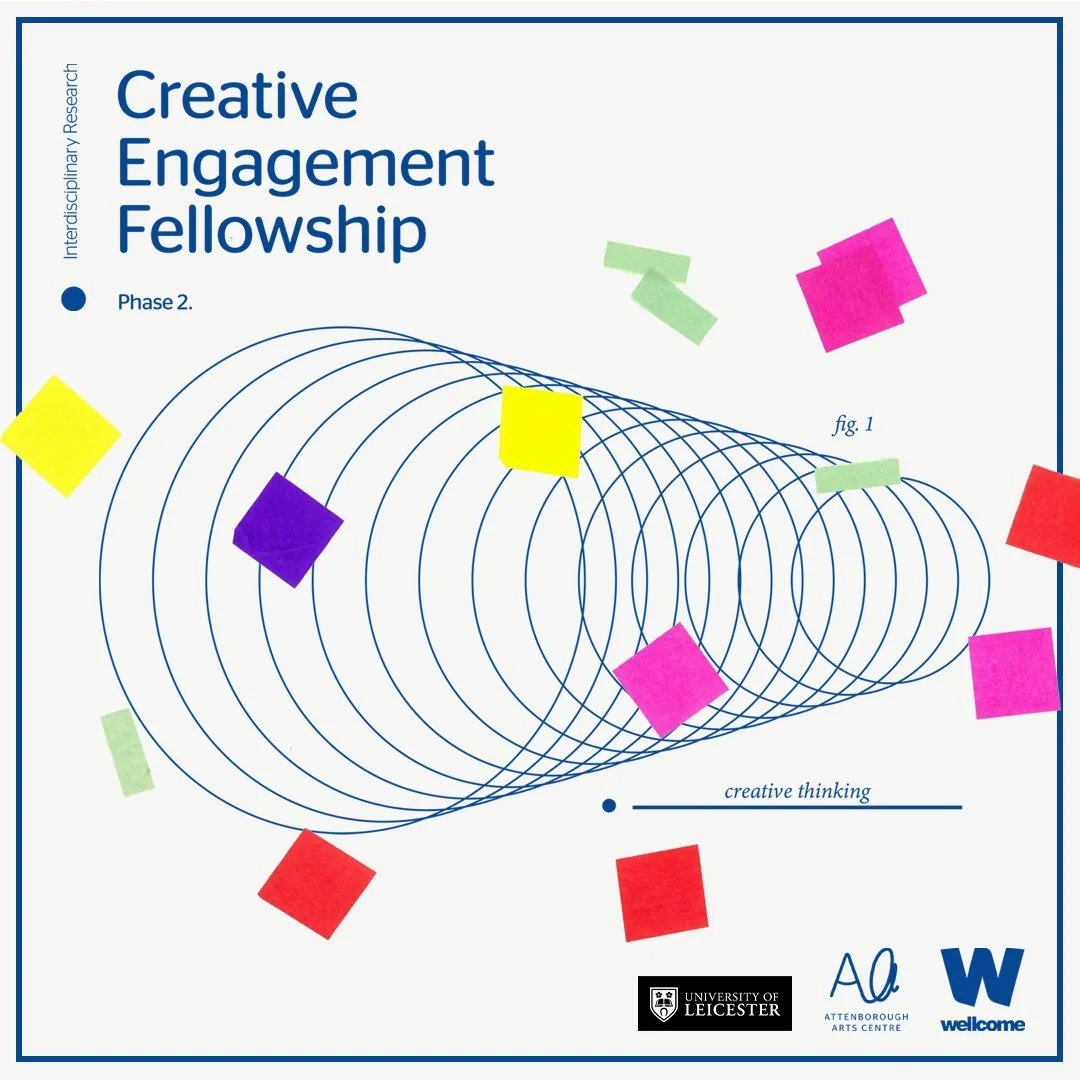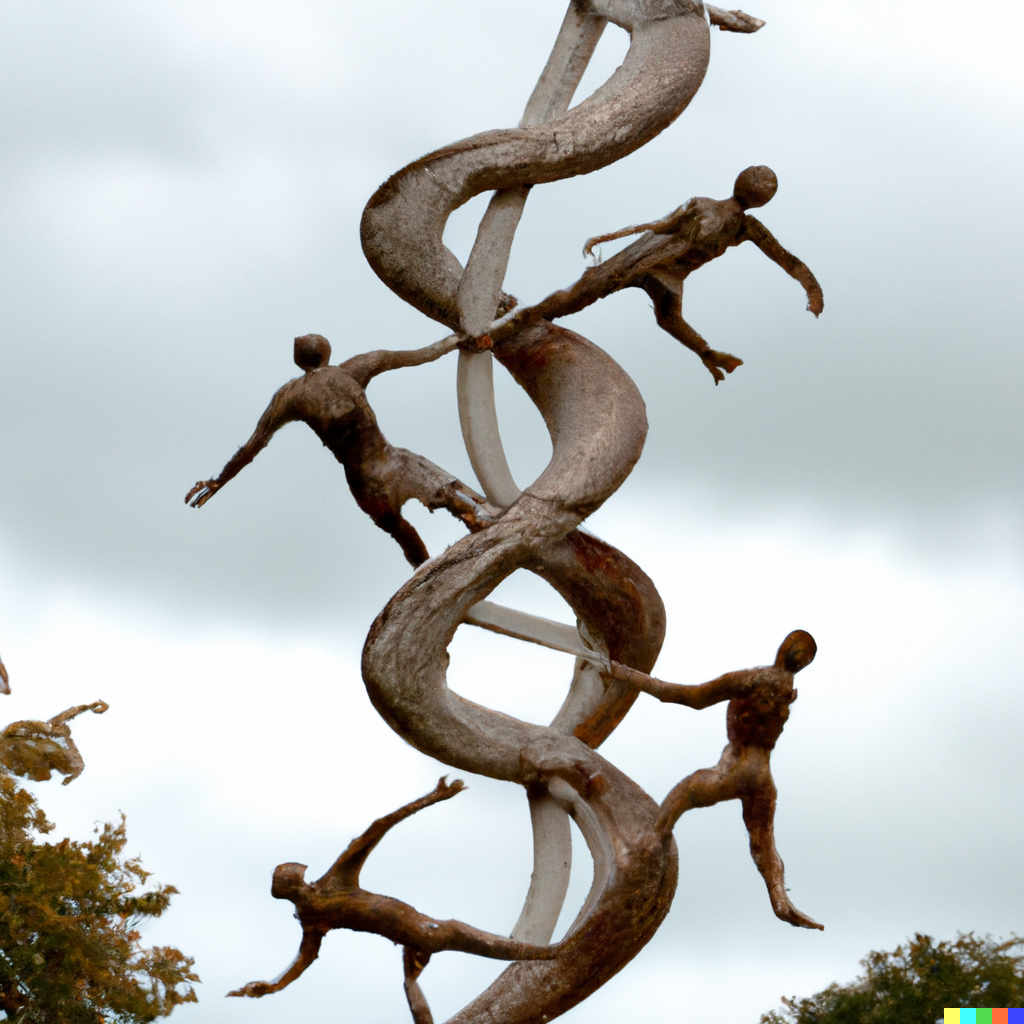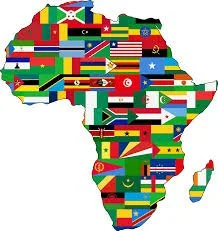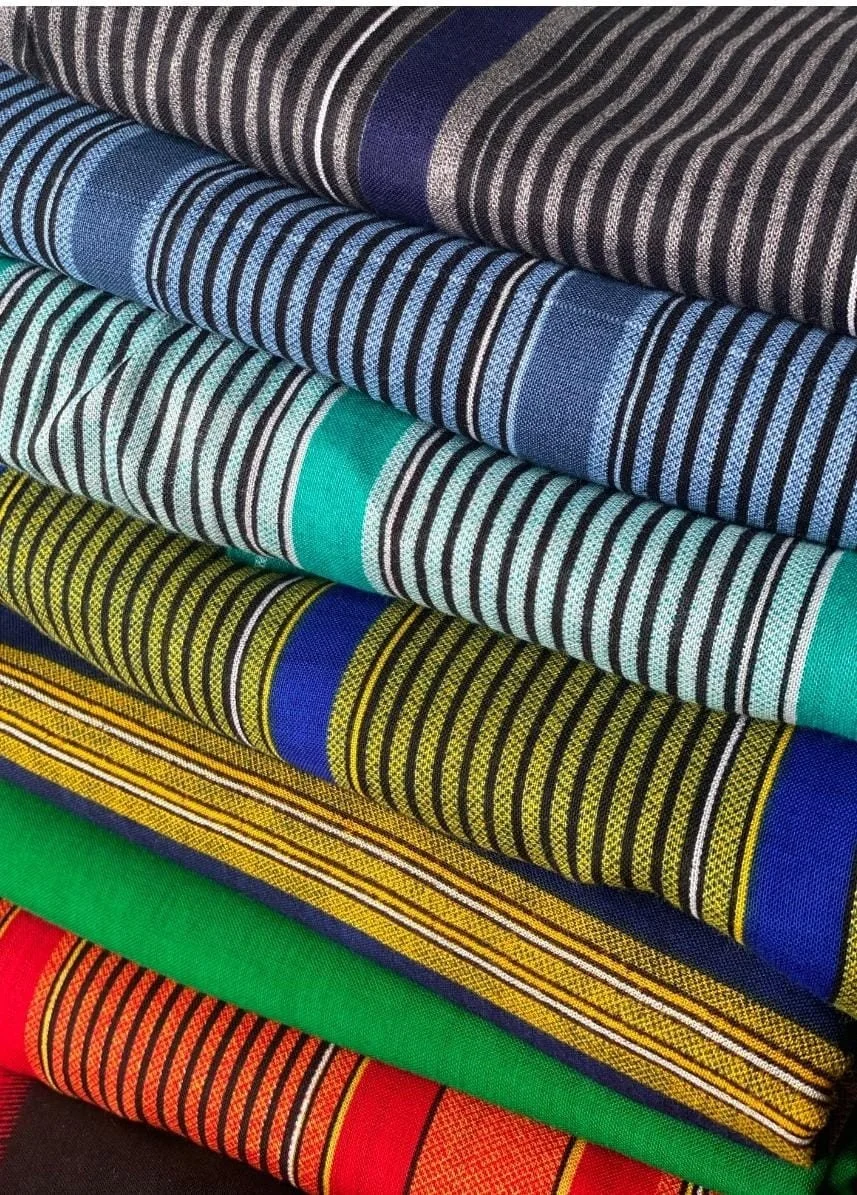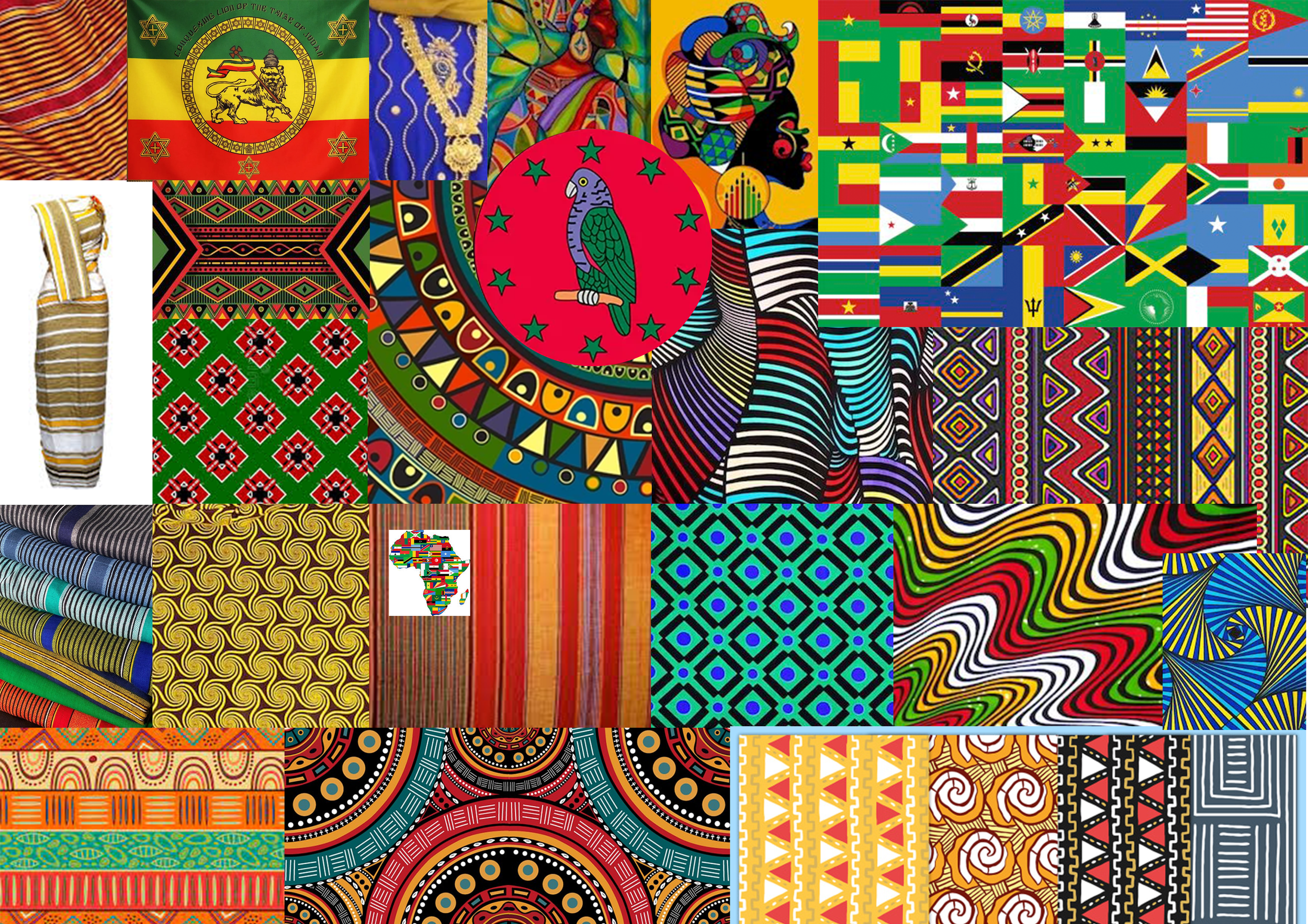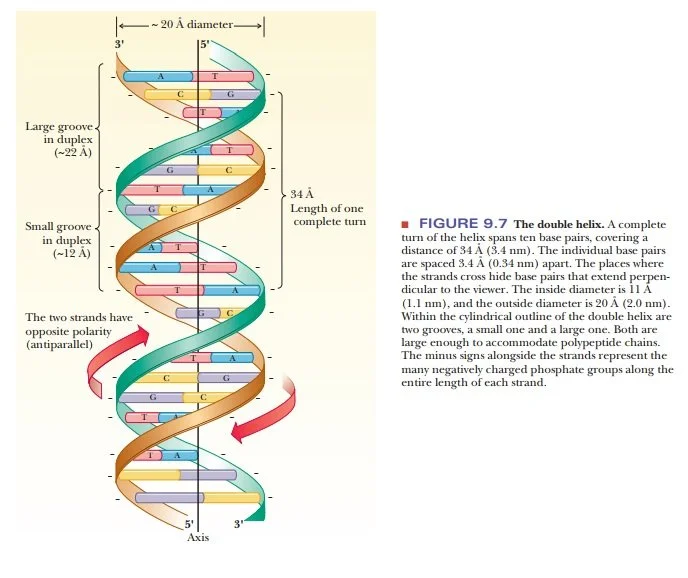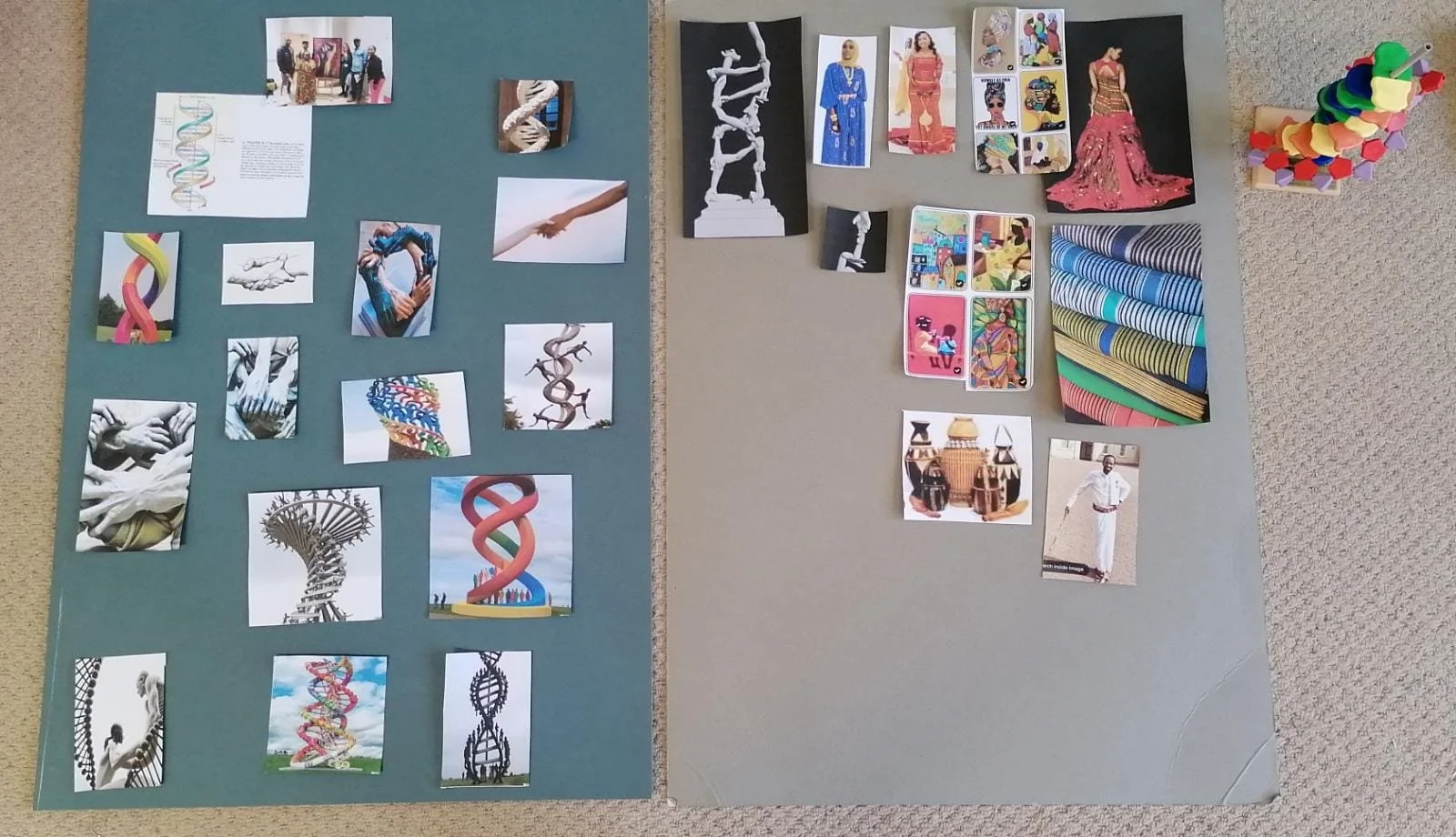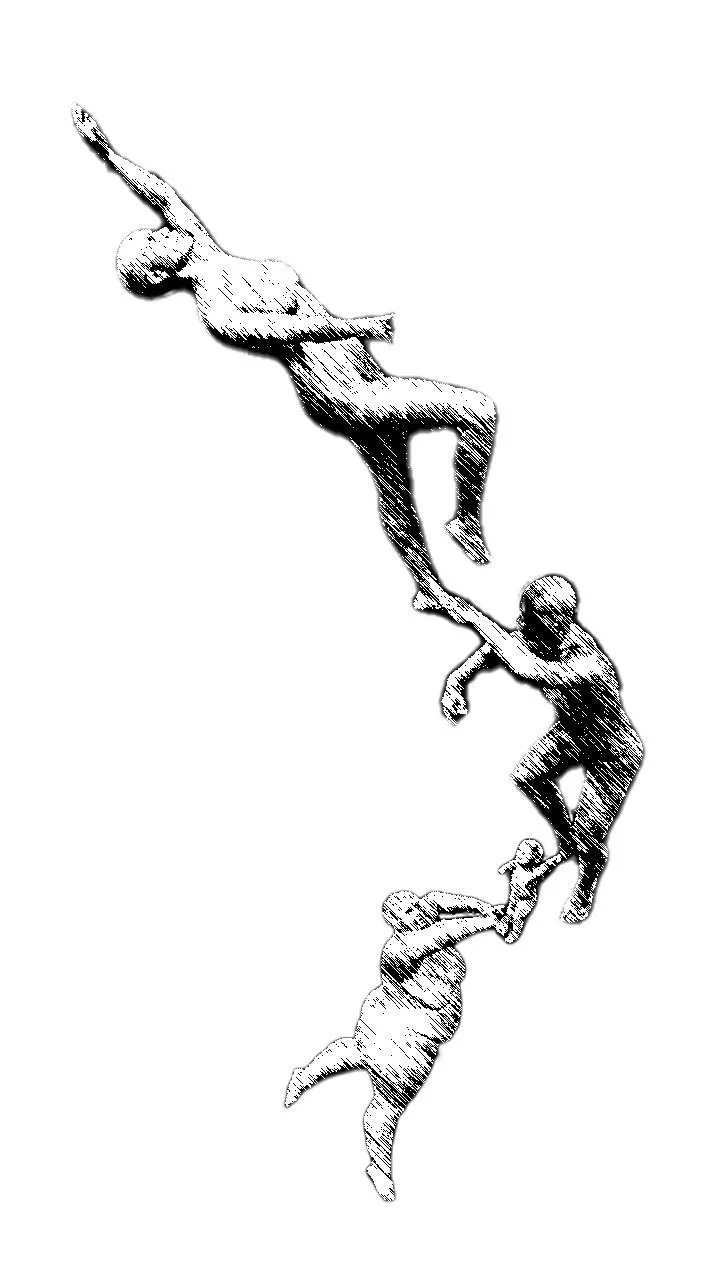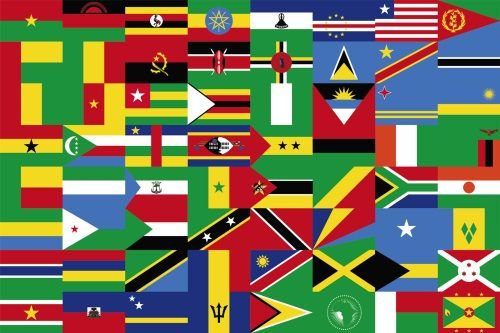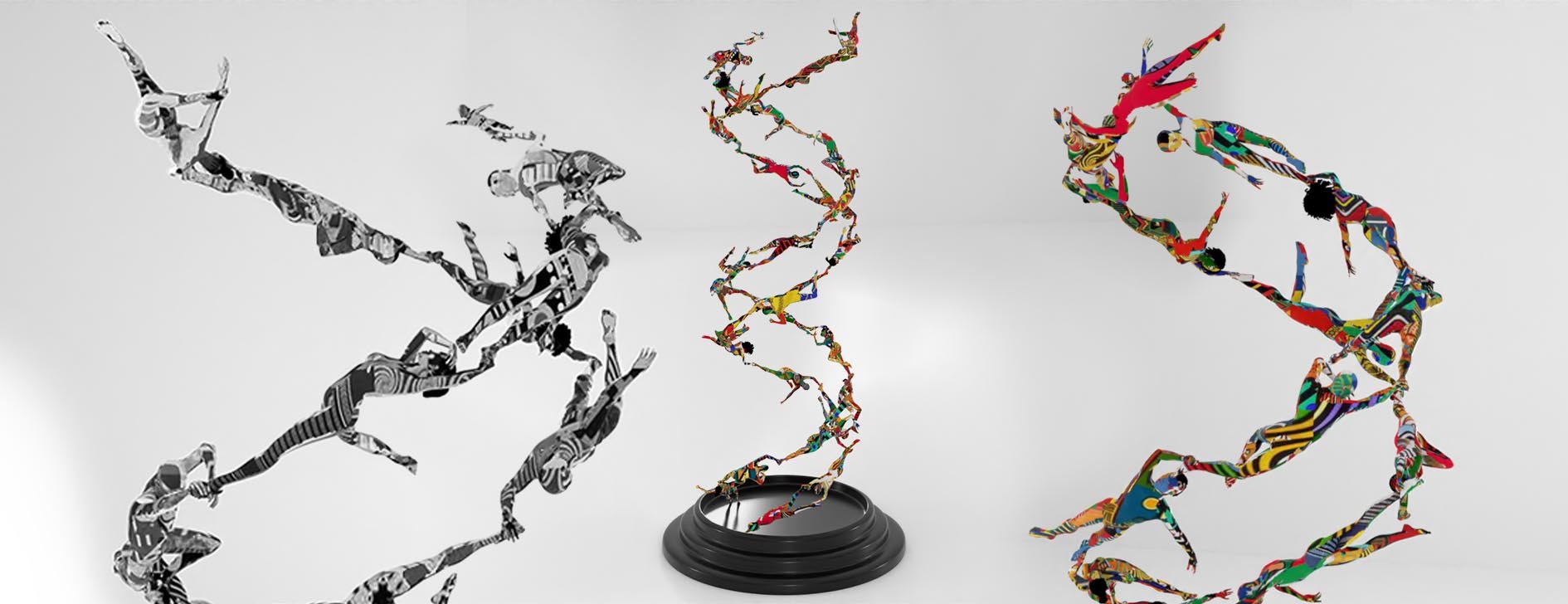
Commissioned by The WellCome Trust in Partnership with Attenborough Arts Centre
Creative Fellowship: Human Genomics
Noemi Nicole Piga
“Vishal conveyed the idea into a DNA-inspired double helix made by humans supporting each other; both cultural and genomic information transcend time being carried over from ancestors to future generations. The bespoke skin layer was developed to represent our participants’ individualities: country flags, symbols, fabrics and patterns recalling their heritage.”
Science and Art…
This project gives visibility to the experiences of members of the Black communities in Leicester through the use of art, with a focus on raising awareness about under representation in genomics.
Why ?
Human genomics looks at our DNA to understand disease, biology and diversity. Most participants in current genomic studies are of white European descent, while individuals of African descent represent only a very small proportion. This lack of diversity hinders genomic discoveries for all population groups, contributing to health inequalities.
In Leicester, Black communities represent the second largest ethnic minority group, so we engaged members of this community in a dialogue to better understand their perceptions, knowledge and experience about human genomics and its barriers, using a creative medium.
The commission requirement was that the outcome had to be digital.
How ?
Through two focus groups, we had conversations with 11 people (nine women and two men), from different age groups who were part of the Black Caribbean, Black African or Somali communities in Leicester.
We discussed perceptions of human genomics, barriers to participation and the overall message to be delivered by the art piece. This was then created by our artist using feedback from the participants on content, colours, and materials.
What ?
People were familiar with the terms ''DNA'' or ''genetic testing'', but the word ''genomics'' was cryptic and unheard of. Trust, misinformation and lack of knowledge were the main barriers to participation. There was a genuine desire to learn more about genomic research and its impact on daily life, explained in accessible language.
Participants believed it is important to bring such dialogue to the local communities, and off the academic grounds, by organising future meetings in community settings, such as Highfields or St. Matthews, reaching out to schools and teachers, and local radio too.
They envisaged the art piece as a message of trust, hope and inclusivity for the future of human genomics. They wanted to relate to and identify with it using bright colours, and details specific to their cultures.
Vishal conveyed the idea into a DNA-inspired double helix made by humans supporting each other; both cultural and genomic information transcend time being carried over from ancestors to future generations. The bespoke skin layer was developed to represent our participants’ individualities: country flags, symbols, fabrics and patterns recalling their heritage.
With the use of AI, I was able to create mock ups demonstrating different versions of the potential concept. This allowed me to survey the preferences of the community and what spoke to them.
Vishal conveyed the idea into a DNA-inspired double helix made by humans supporting each other; both cultural and genomic information transcend time being carried over from ancestors to future generations. The bespoke skin layer was developed to represent our participants’ individualities: country flags, symbols, fabrics and patterns recalling their heritage.

The final presentation
We created a video showcasing a 3D sculpture for a virtual world. By using the benefits of the virtual space, I designed the helix without gravity constraints, allowing the sculpture to stand elegantly on thin joints.
Thank you
We would like to thank all the participants and community advisors who took part in this project: their insights, ideas and experiences shaped the vision of this art piece. We also acknowledge the Clip Group and Women4Change who helped us to spread our event among their members.
Visual artist: Vishal Joshi
Academic team: Noemi-Nicole Piga, Chiara Batini, Barbara Czyznikowska, Winifred Ekezie, Katherine Fawcett, Laura Venn
This project was supported by a Creative Engagement Fellowship Phase 2, funded by the University of Leicester’s Wellcome Trust Institutional Strategic Support Fund and the Attenborough Arts Centre.
AAC https://attenborougharts.com/university/research-and-education/creative-engagement-fellowship/



